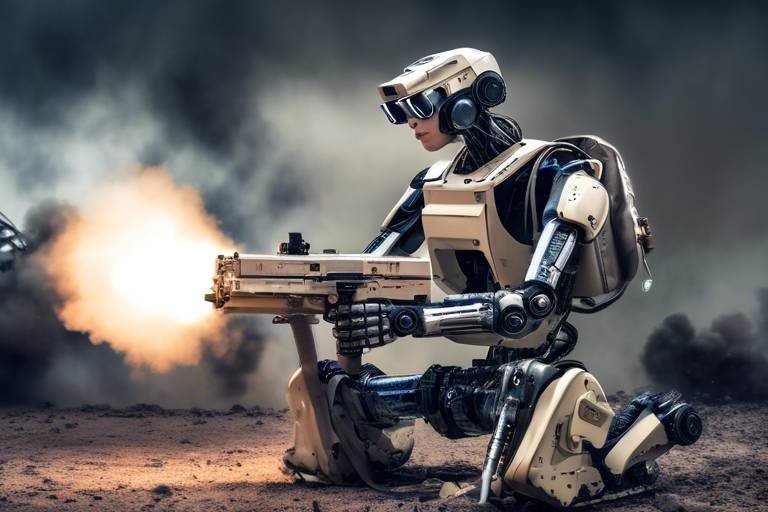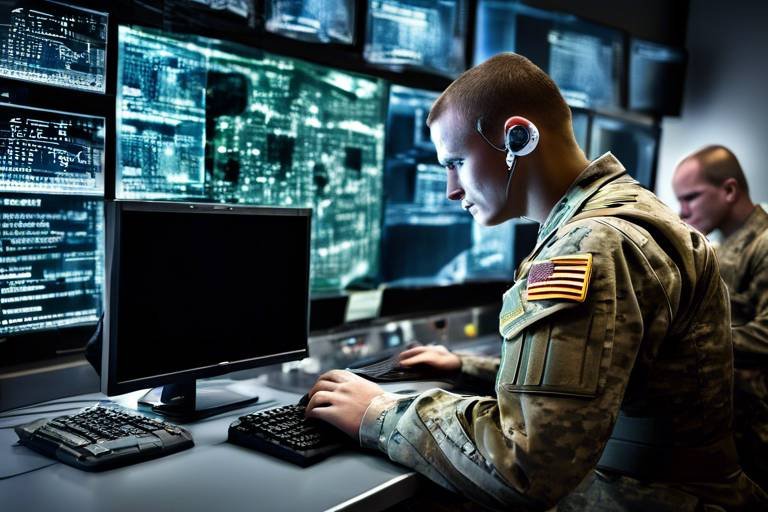Exploring the Role of Robotics in Modern Military Warfare
The landscape of warfare is undergoing a profound transformation, driven largely by the integration of robotics into military operations. Gone are the days when battles were fought solely by human soldiers on the ground; today, advanced technologies are reshaping strategies and tactics on the battlefield. From unmanned aerial vehicles (UAVs) to ground robots and underwater drones, the role of robotics in modern warfare is not just significant—it’s revolutionary. As we delve into this topic, we’ll explore how these machines are not only enhancing operational efficiency but also raising critical questions about ethics and accountability in combat.
At the heart of this transformation is the undeniable fact that robotics offer unparalleled advantages in terms of precision and effectiveness. Imagine a scenario where a military operation can be executed with minimal risk to human life, where drones can gather intelligence in real-time without putting soldiers in harm's way. This is not science fiction; it’s the reality of modern military strategy. The use of robotics allows for a level of surveillance and reconnaissance that was unimaginable just a few decades ago, enabling commanders to make informed decisions based on accurate data.
However, the rise of robotics in warfare is not without its challenges. As military forces around the world embrace these technologies, they must navigate a complex landscape of ethical considerations and accountability issues. For instance, when a robot makes a decision that leads to loss of life, who is held responsible? These questions are not merely academic; they have real-world implications that could shape the future of international conflict.
As we explore the various facets of robotics in military operations, we will uncover the history of military robotics, the different types of military robots, their numerous benefits, and the ethical dilemmas they present. This comprehensive examination will provide a clearer understanding of how robotics are not just tools of war, but critical components of modern military strategy.
- What are military robots used for? Military robots are used for a variety of purposes, including surveillance, reconnaissance, bomb disposal, and logistical support.
- How do UAVs enhance military operations? UAVs provide real-time data and situational awareness, allowing military commanders to make informed decisions while keeping personnel out of harm's way.
- What are the ethical concerns surrounding military robotics? Ethical concerns include accountability for decisions made by autonomous systems and the potential dehumanization of warfare.
- Will robots replace human soldiers in the future? While robots are likely to play a larger role in military operations, they are expected to complement rather than completely replace human soldiers.

History of Military Robotics
The journey of military robotics is a fascinating tale that intertwines innovation, necessity, and the relentless pursuit of efficiency in warfare. The origins of robotics in military contexts can be traced back to the early 20th century, where the seeds of automation were planted with simple remote-controlled devices. These early inventions paved the way for a revolution that would forever change the landscape of modern warfare.
During World War I, the concept of using machines to assist in combat began to gain traction. The invention of the tank marked a significant milestone, showcasing how mechanization could alter battle tactics and strategies. However, it wasn't until World War II that the military truly began to explore the potential of robotic technology. The use of unmanned aerial vehicles (UAVs) for reconnaissance missions emerged, albeit in rudimentary forms, setting the stage for a new era of surveillance and intelligence gathering.
Fast forward to the late 20th century, and we see the introduction of more sophisticated robotic systems. The Gulf War in the early 1990s highlighted the effectiveness of robotic technology in combat scenarios. The U.S. military deployed UAVs like the Predator, which not only provided real-time intelligence but also showcased the potential for armed drones. This marked a pivotal moment as military leaders recognized the advantages of using robots to enhance operational capabilities while minimizing risks to human soldiers.
As we entered the 21st century, advancements in technology accelerated the development of military robotics. The introduction of ground robots for bomb disposal and logistics transformed how the military approached dangerous tasks. These robots could navigate treacherous terrains and perform high-risk operations, thereby reducing the exposure of soldiers to life-threatening situations. The increasing sophistication of AI and machine learning has further propelled the evolution of military robotics, allowing for greater autonomy and decision-making capabilities.
Today, military robotics encompasses a wide array of systems, including underwater drones for naval operations, advanced combat drones for air superiority, and ground robots that assist in various logistical and reconnaissance roles. The integration of these technologies has not only changed how wars are fought but has also raised critical questions about the future of warfare and the ethical implications of using machines in combat.
In summary, the history of military robotics is a testament to human ingenuity and the relentless quest for efficiency in warfare. From the early days of remote-controlled devices to the sophisticated autonomous systems of today, robotics has transformed military operations, offering both unprecedented advantages and complex challenges. As we look toward the future, it is clear that the role of robotics in warfare will continue to evolve, pushing the boundaries of what is possible on the battlefield.
- What are military robots used for? Military robots are used for various applications, including surveillance, reconnaissance, bomb disposal, and logistics support.
- When did military robotics begin? The use of robotics in military contexts began in the early 20th century, with significant advancements occurring during World War II.
- How have military robots changed warfare? Military robots have increased operational efficiency, reduced risks to human life, and enhanced data collection capabilities.
- What are the ethical concerns surrounding military robotics? Ethical concerns include accountability for autonomous decisions, potential dehumanization of warfare, and the implications for international conflict.
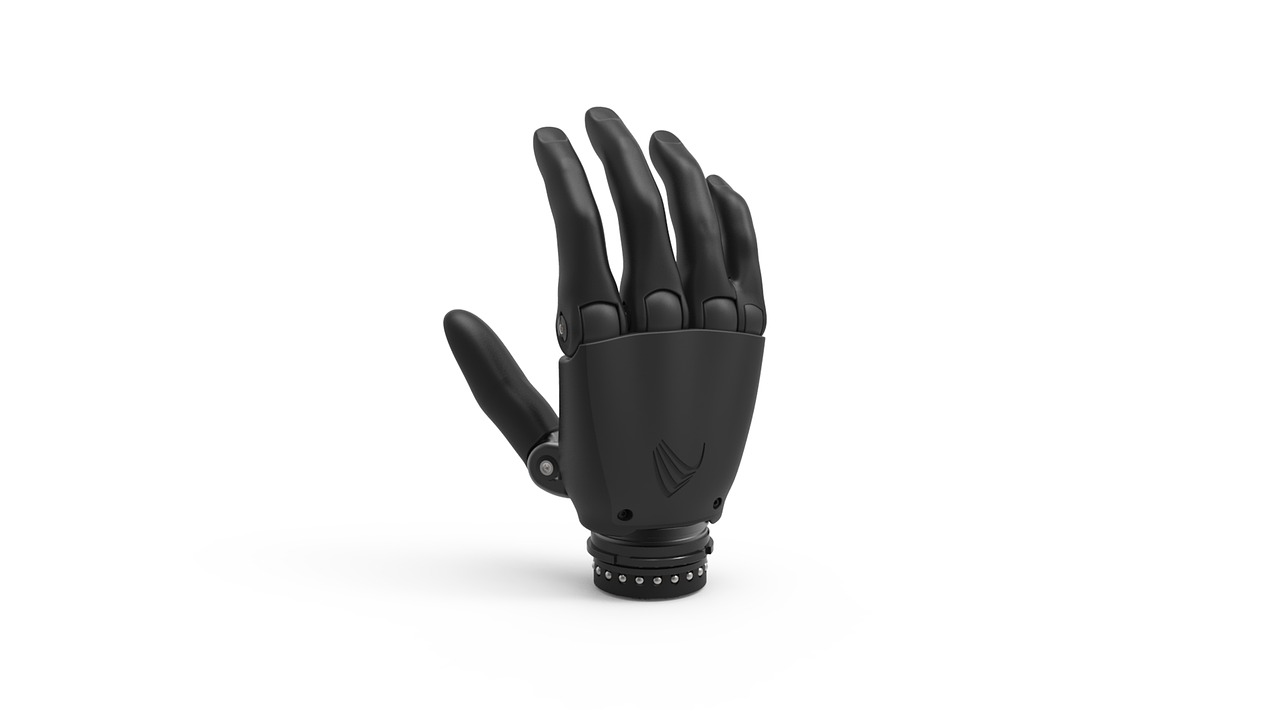
Types of Military Robots
In the ever-evolving landscape of military technology, robots have emerged as game-changers, redefining how modern warfare is conducted. From the skies to the ground and even beneath the waves, various types of military robots play critical roles in enhancing operational capabilities. Each category of military robots is designed for specific tasks, ensuring that they contribute effectively to mission success. Let's dive deeper into the fascinating world of military robotics and explore the different types that are currently in use.
One of the most recognized categories is the Unmanned Aerial Vehicles (UAVs), commonly known as drones. These flying machines have revolutionized surveillance and reconnaissance missions. UAVs come equipped with advanced sensors and cameras, allowing them to gather real-time intelligence without putting pilots at risk. Their ability to operate in hostile environments while providing critical data to military commanders has made them indispensable in modern warfare.
UAVs can be further classified into two primary types: combat drones and surveillance drones. Combat drones are designed to carry out precision strikes against enemy targets, leveraging advanced targeting systems that ensure minimal collateral damage. They can operate autonomously or be remotely piloted, offering unparalleled flexibility in combat scenarios. On the other hand, surveillance drones focus on intelligence gathering, providing real-time data and situational awareness. Their ability to monitor enemy movements and gather actionable intelligence can significantly influence the outcome of military operations.
Combat drones have become a cornerstone of modern air warfare strategies. These machines are equipped with high-precision weapons systems that enable them to engage targets with remarkable accuracy. The integration of artificial intelligence (AI) in combat drones enhances their decision-making capabilities, allowing them to adapt to dynamic combat environments. This not only improves mission effectiveness but also reduces the risk to human pilots.
On the flip side, surveillance drones play a crucial role in intelligence operations. They provide military commanders with vital information about enemy positions and movements, enabling informed decision-making. The ability to operate at high altitudes and cover vast areas makes surveillance drones essential for maintaining situational awareness in conflict zones. Their real-time data feeds can be the difference between success and failure in military engagements.
Moving from the skies to the ground, ground robots are another key player in modern military operations. These versatile machines are designed for various applications, including bomb disposal, logistics support, and reconnaissance missions. Ground robots can navigate challenging terrains, making them ideal for operations in urban environments or areas with hazardous conditions. Their ability to perform dangerous tasks, such as neutralizing explosives, significantly reduces the risk to human soldiers.
In addition to bomb disposal, ground robots can assist in logistics by transporting supplies and equipment, thereby streamlining operations. Their use in reconnaissance missions allows them to gather intelligence in areas that may be too dangerous for human soldiers to enter. The adaptability and effectiveness of ground robots make them invaluable assets in contemporary military strategies.
Not to be overlooked, underwater drones are making waves in naval warfare. These robotic systems are designed for a variety of tasks, including mine detection, reconnaissance, and even search and rescue operations. Equipped with sonar and advanced imaging systems, underwater drones can navigate the depths of oceans and rivers, gathering crucial intelligence that can aid naval forces in strategic planning.
In summary, the diverse types of military robots—from UAVs to ground robots and underwater drones—each serve unique roles that enhance the capabilities of modern armed forces. As technology continues to advance, we can expect these robots to become even more sophisticated, paving the way for a new era in military operations.
- What are the main types of military robots? The main types include Unmanned Aerial Vehicles (UAVs), ground robots, and underwater drones, each serving specific operational purposes.
- How do UAVs enhance military operations? UAVs provide real-time intelligence, reduce risks to human pilots, and enable precision strikes in combat scenarios.
- What are the ethical concerns surrounding military robotics? Ethical concerns include accountability in autonomous warfare, the potential for dehumanization, and the implications for international conflict dynamics.
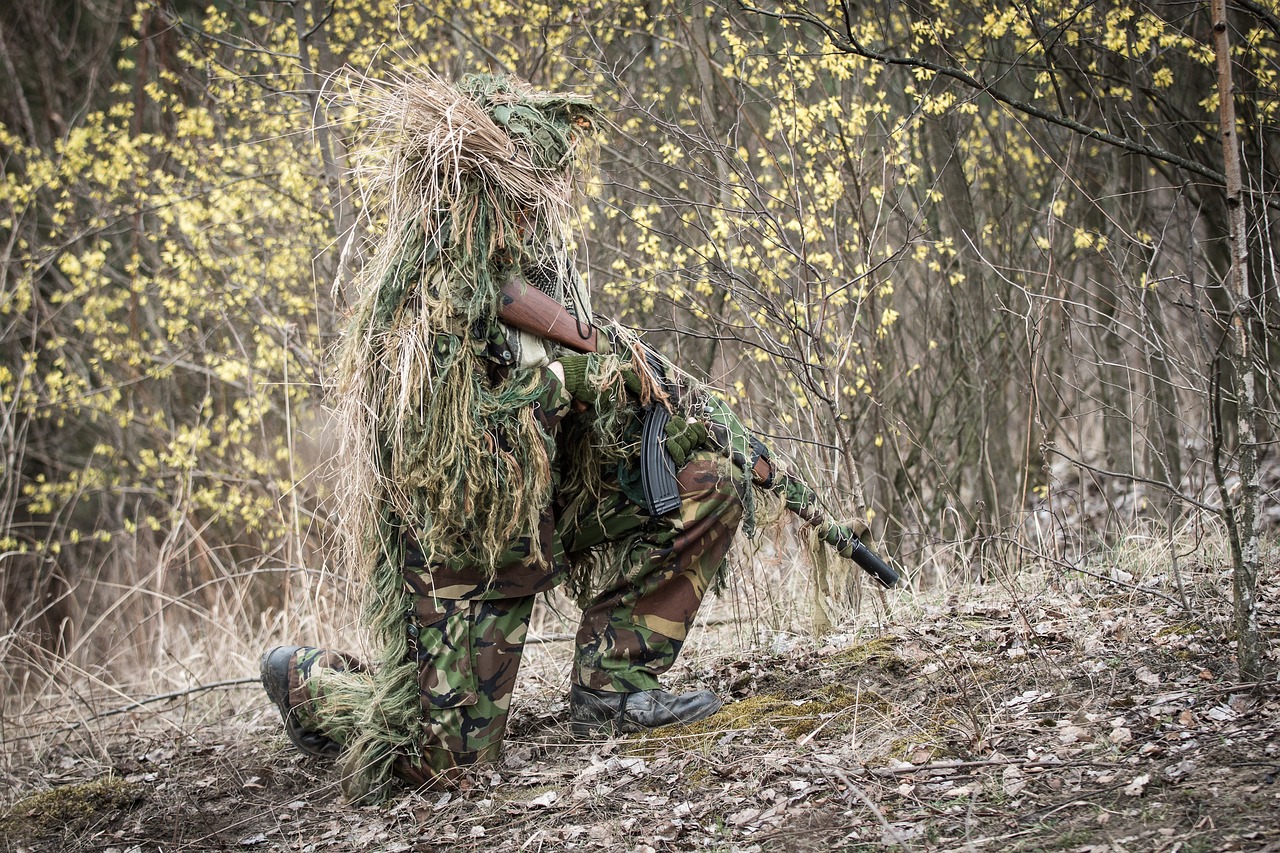
Unmanned Aerial Vehicles (UAVs)
Unmanned Aerial Vehicles, commonly known as UAVs or drones, have revolutionized the landscape of military operations. These flying robots are not just a technological marvel; they represent a significant shift in how military forces conduct surveillance, reconnaissance, and combat missions. Imagine having the ability to monitor enemy movements or gather intelligence without putting a single soldier in harm's way. That’s the power of UAVs!
One of the most compelling aspects of UAVs is their versatility. They can be equipped with various payloads, ranging from high-resolution cameras to advanced weaponry, making them invaluable across different operational contexts. For instance, in surveillance missions, UAVs provide real-time video feeds that allow commanders to make informed decisions on the battlefield. This capability enhances situational awareness and reduces the fog of war, which has historically plagued military operations.
Moreover, UAVs excel in combat scenarios. Combat drones can carry out precision strikes with incredible accuracy, minimizing collateral damage and civilian casualties. This precision is not just a matter of technology; it’s about saving lives—both military personnel and civilians. The ability to strike targets from a safe distance allows military planners to engage threats while maintaining a strategic advantage.
While the operational benefits are clear, UAVs also come with their own set of challenges. The reliance on drones for military operations raises questions about ethical implications and accountability. For instance, when a drone strikes a target, who is responsible for that decision? Is it the operator, the military command, or the technology itself? These questions are critical as we navigate the complexities of modern warfare.
In addition to ethical considerations, the use of UAVs has transformed the dynamics of international conflict. As more nations develop and deploy their own UAV capabilities, the landscape of military power is shifting. Countries are now investing heavily in drone technology, leading to an arms race of sorts in the skies. This increasing accessibility of UAV technology raises concerns about global security and the potential for misuse by non-state actors.
In conclusion, UAVs represent a double-edged sword in modern military warfare. They offer unparalleled advantages in terms of operational efficiency and risk reduction, but they also challenge our understanding of accountability and ethical warfare. As technology continues to advance, the role of UAVs in military operations will undoubtedly evolve, necessitating ongoing dialogue about their implications for future conflicts.
- What are UAVs used for in the military? UAVs are primarily used for surveillance, reconnaissance, and combat missions, allowing military forces to gather intelligence and engage targets without risking human lives.
- How do UAVs enhance military operations? They provide real-time data, improve decision-making capabilities, and enable precision strikes, all of which contribute to increased operational efficiency and reduced casualties.
- What are the ethical concerns surrounding UAVs? Ethical concerns include accountability for decisions made by drones, the potential for civilian casualties, and the dehumanization of warfare.
- Are UAVs becoming more common in warfare? Yes, many countries are developing and deploying UAV technologies, leading to an increase in their use in military operations worldwide.

Combat Drones
When we think about modern warfare, the image of a combat drone soaring through the sky often comes to mind. These incredible machines have revolutionized military operations, bringing a new level of precision and efficiency to combat scenarios. Unlike traditional aircraft, combat drones, or unmanned aerial vehicles (UAVs), can execute missions without putting pilots in harm's way. This not only reduces the risk to human life but also allows for operations in environments that might be too dangerous for manned aircraft.
Combat drones are equipped with advanced technology, including high-resolution cameras, sensors, and weaponry, allowing them to gather intelligence, conduct surveillance, and engage targets with pinpoint accuracy. Imagine the ability to strike an enemy position from thousands of feet in the air, all while the operator remains safely miles away. This capability is a game-changer, enabling military forces to respond rapidly to threats while minimizing collateral damage.
One of the most significant advantages of combat drones is their ability to conduct precision strikes. These drones can be armed with a variety of munitions, including missiles and bombs, which can be deployed with exceptional accuracy. For instance, during military operations in urban areas, the risk of civilian casualties is a major concern. Combat drones can identify and eliminate specific threats while avoiding nearby non-combatants, a feat that is often challenging for traditional airstrikes.
Furthermore, combat drones play a crucial role in intelligence gathering. They can fly over hostile territories for extended periods, providing real-time data and situational awareness to military commanders. This capability allows for better-informed decision-making and enhances the overall effectiveness of military operations. In many cases, the intelligence gathered by these drones can be the difference between success and failure in a mission.
However, the use of combat drones is not without its controversies. The ethical implications of using unmanned systems in warfare raise significant questions. For instance, the dehumanization of combat can lead to a disconnect between operators and the consequences of their actions. When a drone operator is thousands of miles away, does it become easier to pull the trigger? This is a question that military leaders and policymakers are grappling with as they navigate the future of warfare.
In conclusion, combat drones represent a significant leap forward in military technology. They offer enhanced operational capabilities, allowing for precise strikes and improved intelligence gathering, all while reducing risks to human life. As we continue to explore the potential of robotics in warfare, it is essential to consider both the advantages and the ethical implications of these powerful tools.
- What are combat drones used for? Combat drones are primarily used for surveillance, reconnaissance, and precision strikes in military operations.
- How do combat drones enhance military operations? They provide real-time intelligence, reduce the risk to human life, and allow for more precise targeting of threats.
- What are the ethical concerns surrounding combat drones? Ethical concerns include the potential for dehumanization in warfare, accountability for drone strikes, and the impact on civilian populations.

Surveillance Drones
Surveillance drones have revolutionized the way military operations are conducted, serving as the eyes and ears of modern warfare. These unmanned aerial vehicles (UAVs) are equipped with advanced sensors and cameras, enabling them to gather real-time intelligence from the skies. Imagine having a bird’s-eye view of a battlefield, where you can monitor troop movements, assess enemy positions, and gather crucial data without putting any soldiers at risk. This capability is not just a luxury; it’s a game-changer in terms of operational effectiveness.
One of the primary advantages of surveillance drones is their ability to fly at high altitudes and cover vast areas without being detected. This stealthy approach allows military commanders to gain insights into enemy activities while keeping their forces safe from counter-attacks. For instance, during reconnaissance missions, these drones can provide live video feeds and thermal imaging, which are invaluable for understanding the terrain and the enemy's strategic placements.
Furthermore, surveillance drones can be deployed in various scenarios, including:
- Battlefield Reconnaissance: Gathering information about enemy troop movements and fortifications.
- Search and Rescue Operations: Locating missing soldiers or civilians in hostile environments.
- Border Patrol: Monitoring borders for illegal activities or potential threats.
In addition to their operational capabilities, surveillance drones also play a crucial role in enhancing situational awareness for military leaders. With the integration of sophisticated data analytics, commanders can make informed decisions based on accurate and timely information. This not only improves the effectiveness of missions but also reduces the likelihood of collateral damage, as precise targeting becomes possible through detailed reconnaissance.
However, the use of surveillance drones is not without its challenges. Issues such as data privacy and the potential for misuse have sparked debates about their ethical implications. As these technologies continue to evolve, it’s essential for military organizations to establish clear guidelines and protocols to ensure that surveillance drones are used responsibly and within the bounds of international law.
In conclusion, surveillance drones are a cornerstone of modern military operations, providing unparalleled intelligence capabilities that enhance situational awareness and operational effectiveness. As technology advances, the potential for these drones to transform military strategies will only increase, making them an indispensable tool in the arsenal of contemporary warfare.
- What are surveillance drones used for?
Surveillance drones are primarily used for gathering intelligence, monitoring enemy movements, and enhancing situational awareness in military operations. - How do surveillance drones gather data?
They are equipped with advanced cameras and sensors that capture real-time video and thermal images, which are then transmitted back to military commanders. - Are there ethical concerns regarding the use of surveillance drones?
Yes, issues such as privacy invasion and potential misuse of data are significant ethical considerations that need to be addressed.
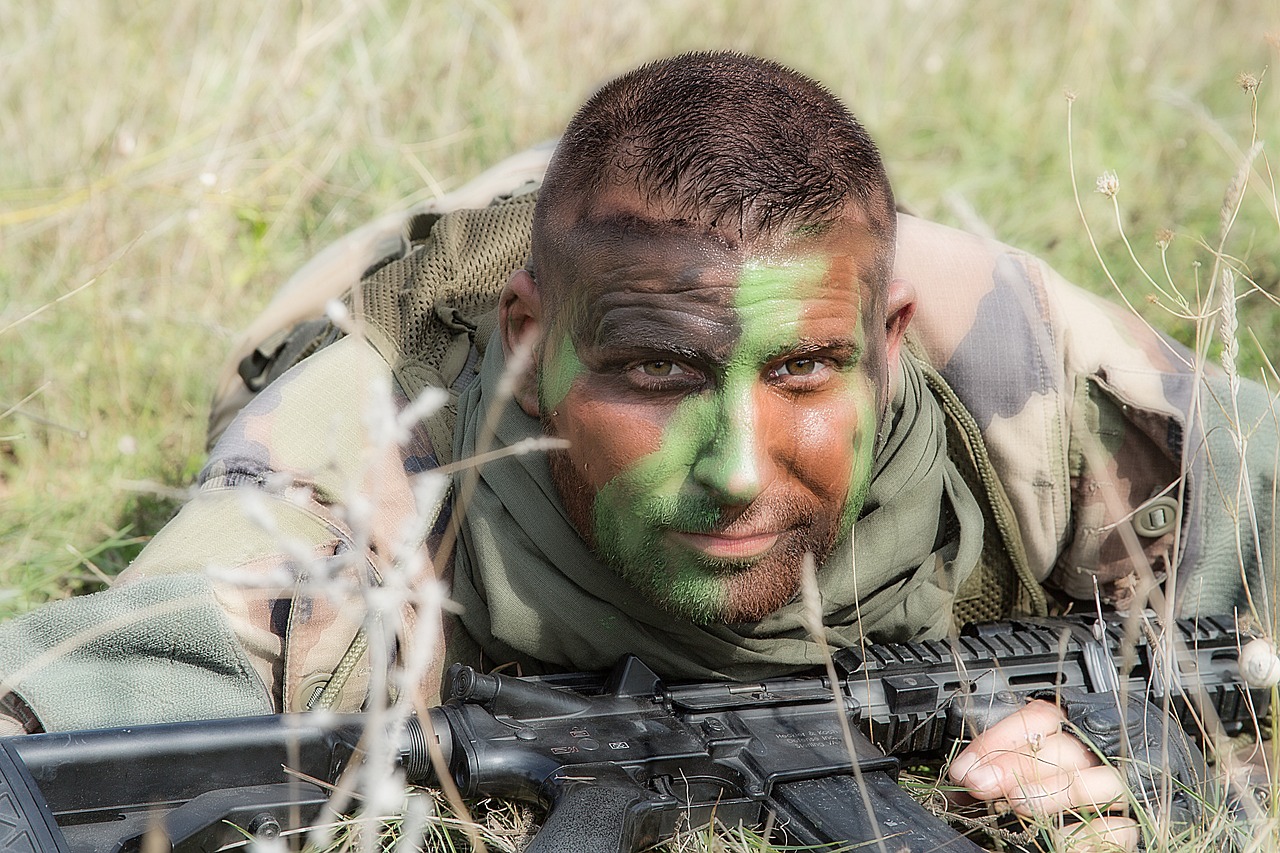
Ground Robots
Ground robots have become a pivotal element in modern military operations, revolutionizing how tasks are executed on the battlefield. These machines are not just metal shells; they are sophisticated systems equipped with advanced technologies that enable them to perform a variety of functions. From bomb disposal to logistics support and reconnaissance missions, ground robots are designed to enhance operational effectiveness while minimizing risk to human life.
One of the most significant advantages of ground robots is their versatility. For instance, during a conflict, a ground robot can be deployed to safely investigate suspicious objects, such as potential explosives, allowing human soldiers to maintain a safe distance. This capability is crucial, especially in urban warfare scenarios where the risk of ambush is high. Ground robots are equipped with sensors and cameras that provide real-time data, allowing military personnel to assess situations without exposing themselves to danger.
Furthermore, logistics support is another critical function of ground robots. In military operations, the timely delivery of supplies can make the difference between success and failure. Robots can transport ammunition, food, and medical supplies to troops in remote or hazardous areas, ensuring that soldiers have what they need to carry out their missions. This not only boosts morale but also enhances the overall efficiency of military operations.
To illustrate the diverse applications of ground robots in military contexts, consider the following table:
| Type of Ground Robot | Primary Function | Key Features |
|---|---|---|
| Explosive Ordnance Disposal (EOD) Robots | Disarming bombs and explosives | Robotic arms, cameras, remote operation |
| Logistics Robots | Transporting supplies | Autonomous navigation, payload capacity |
| Reconnaissance Robots | Gathering intelligence | Real-time video feed, stealth capabilities |
Moreover, ground robots are not just limited to combat roles; they also play a vital part in training exercises. Military forces can utilize ground robots to simulate various scenarios, allowing soldiers to practice their responses in a controlled environment. This innovative approach to training helps prepare troops for real-life situations, making them more effective when it matters most.
In conclusion, the integration of ground robots into military operations marks a significant advancement in warfare technology. Their ability to perform dangerous tasks, coupled with their logistical capabilities, not only enhances operational efficiency but also significantly reduces risk to human lives. As technology continues to evolve, we can expect ground robots to become even more sophisticated, further transforming the landscape of modern military warfare.
- What are ground robots used for in the military? Ground robots are used for various functions such as bomb disposal, logistics support, and reconnaissance missions.
- How do ground robots enhance operational efficiency? They streamline tasks, reduce the need for human involvement in dangerous situations, and ensure timely delivery of supplies.
- Are ground robots autonomous? Many ground robots are equipped with autonomous navigation systems, allowing them to operate independently in certain scenarios.
- What safety measures are in place for using ground robots? Ground robots are designed with multiple safety features, including remote operation capabilities and advanced sensors to detect hazards.

Benefits of Robotics in Warfare
The introduction of robotics into military operations has revolutionized the way armed forces engage in warfare. With advancements in technology, robots are no longer just tools; they have become integral components of modern combat strategies. The benefits of utilizing robotics in warfare are numerous and impactful, leading to significant changes in operational efficiency, risk management, and data collection.
One of the most compelling advantages of military robotics is the enhanced operational efficiency they bring to the battlefield. Robots can perform a variety of tasks that would typically require human intervention, thus streamlining operations. For instance, in logistics, robots can transport supplies to remote locations without the need for human drivers, reducing the time it takes to deliver essential materials. This not only speeds up the overall mission timeline but also minimizes the chances of logistical errors that can occur when humans are involved. Furthermore, robots can operate in harsh environments where human presence would be dangerous or impractical, such as in areas with chemical or biological threats.
Another significant benefit is the reduced risk to human life. In combat scenarios, robots can take on the most perilous tasks, such as bomb disposal or reconnaissance in enemy territory. By deploying robots to handle these dangerous missions, military forces can protect their personnel from potential harm. For example, ground robots equipped with advanced sensors can detect explosives and neutralize them without putting human lives at risk. This capability not only saves lives but also allows soldiers to focus on more strategic aspects of operations, enhancing overall effectiveness.
Moreover, the integration of robotics in military operations leads to improved data collection and analysis. Robots equipped with advanced sensors and cameras can gather real-time intelligence that is crucial for decision-making. This data can be processed and analyzed rapidly, providing commanders with the situational awareness they need to make informed choices on the battlefield. The ability to collect and relay information swiftly can be the difference between success and failure in a military operation. For instance, surveillance drones can monitor enemy movements and relay this information back to command centers, allowing military leaders to adapt their strategies on the fly.
In addition to these operational benefits, robotics also enhances decision-making capabilities. With the aid of artificial intelligence, military robots can analyze vast amounts of data and provide actionable insights to commanders. This not only speeds up the decision-making process but also reduces the likelihood of human error. In high-stress environments where every second counts, having robots that can process information quickly and accurately is invaluable.
Despite these advantages, it is essential to recognize that the integration of robotics into warfare comes with its own set of challenges and ethical considerations. However, the benefits they offer in terms of efficiency, risk reduction, and enhanced data capabilities cannot be overlooked. As technology continues to evolve, the role of robotics in military operations is likely to expand even further, paving the way for a new era of warfare.
- What are the main advantages of using robotics in military operations?
Robotics enhance operational efficiency, reduce the risk to human life, improve data collection, and aid in decision-making. - How do robots improve operational efficiency in warfare?
Robots can perform tasks that require human intervention, such as logistics and reconnaissance, allowing for faster mission execution and minimizing logistical errors. - What role do robots play in protecting soldiers?
Robots take on dangerous tasks like bomb disposal and reconnaissance, thereby reducing the risk of casualties among military personnel. - Can robots collect and analyze data in real-time?
Yes, robots equipped with advanced sensors can gather real-time intelligence and provide commanders with crucial situational awareness.

Enhanced Operational Efficiency
In the fast-paced world of modern warfare, operational efficiency is more crucial than ever. The integration of robotics into military operations has revolutionized how missions are planned and executed. Imagine a battlefield where decisions are made not just on the fly but with the precision and speed that only advanced technology can provide. Robotics allows military forces to streamline their operations, significantly reducing the time it takes to deploy resources and execute missions. This is not just about speed; it’s about making informed decisions that can save lives and ensure mission success.
One of the most significant advantages of using robotics is the reduction of human error. Traditional military operations often rely on human judgment, which can be affected by stress, fatigue, and the chaotic nature of combat. Robots, on the other hand, can operate based on pre-programmed algorithms and real-time data analysis, allowing them to perform tasks with a level of accuracy that is often unattainable by human soldiers. For instance, in logistics support, robotic systems can manage supply chains, track inventory, and even deliver essential supplies to troops in the field, all while minimizing the risk of mistakes that could lead to mission failure.
Moreover, the use of robotics enhances data collection and analysis. Military robots equipped with advanced sensors and communication systems can gather vast amounts of data during missions. This data can be processed and analyzed in real-time, providing commanders with critical insights that inform their decisions. For example, a reconnaissance drone can survey a target area, gather intelligence, and relay that information back to command centers within minutes, allowing for rapid strategic adjustments.
To illustrate the impact of robotics on operational efficiency, consider the following table that compares traditional military operations with those enhanced by robotics:
| Aspect | Traditional Operations | Robotics-Enhanced Operations |
|---|---|---|
| Decision-Making Speed | Hours to days | Minutes to hours |
| Human Error Rate | Higher | Lower |
| Data Collection | Manual | Automated and real-time |
| Logistical Support | Human-dependent | Robot-assisted |
This table clearly shows that the use of robotics not only speeds up operations but also enhances their reliability and effectiveness. As military forces continue to adopt these technologies, the potential for improved operational efficiency will only grow. In a world where every second counts, the ability to make quick, informed decisions can be the difference between success and failure on the battlefield.
Ultimately, the future of military operations lies in the seamless integration of robotics into all aspects of warfare. As these technologies evolve, we can expect to see even greater enhancements in operational efficiency, allowing military forces to adapt and respond to challenges with unprecedented speed and accuracy.
- What are the main benefits of using robotics in military operations?
Robotics improve operational efficiency, reduce human error, enhance data collection, and minimize risks to human life. - How do robots make decisions in combat?
Robots use pre-programmed algorithms and real-time data analysis to make decisions, allowing for rapid responses in dynamic environments. - Are there any ethical concerns regarding military robots?
Yes, there are concerns about accountability, decision-making, and the potential for dehumanization in warfare.

Reduced Risk to Human Life
In the world of modern warfare, the stakes are incredibly high, and the cost of human life is often the most difficult price to pay. This is where robotics enters the battlefield, revolutionizing how military operations are conducted and significantly reducing risks to human soldiers. Imagine a scenario where a bomb-disposal unit is sent to neutralize an explosive device. Instead of sending a brave soldier into a potentially deadly situation, a ground robot can be deployed to do the job. This not only preserves human life but also enhances the effectiveness of the mission.
The integration of robotics into military strategies has led to the development of various types of machines designed specifically to take on the most dangerous tasks. For instance, unmanned aerial vehicles (UAVs) are often utilized for surveillance and reconnaissance missions, allowing military personnel to gather crucial intelligence without putting themselves in harm's way. These drones can fly into hostile territories and gather real-time data, providing commanders with a comprehensive view of the battlefield without risking lives.
Moreover, the use of combat drones has transformed air warfare. These machines can execute precision strikes against enemy targets while minimizing collateral damage. By utilizing advanced targeting systems, combat drones can engage threats with a level of accuracy that human pilots may find challenging, especially in high-pressure situations. This capability not only protects soldiers in the air but also reduces the risk of civilian casualties on the ground.
To illustrate the impact of robotics on reducing human risk in military operations, consider the following table outlining the roles of different military robots:
| Type of Robot | Primary Function | Impact on Human Life |
|---|---|---|
| Unmanned Aerial Vehicles (UAVs) | Surveillance, reconnaissance, combat | Minimizes risk to pilots |
| Ground Robots | Bomb disposal, logistics, reconnaissance | Protects soldiers from explosive threats |
| Underwater Drones | Naval reconnaissance, mine detection | Reduces risk to naval divers |
These advancements not only save lives but also enhance the overall effectiveness of military operations. With robots handling the most perilous tasks, soldiers can focus on strategic planning and execution. This shift allows them to operate more efficiently and confidently, knowing that they are not directly exposed to immediate threats.
However, while the benefits of robotics in reducing risks to human life are clear, it is essential to acknowledge the ongoing debate surrounding the ethical implications of using machines in warfare. As we continue to develop and deploy these technologies, we must consider not just the tactical advantages but also the moral responsibilities that come with them. Are we, as a society, prepared to accept the consequences of allowing machines to make life-and-death decisions? This question will undoubtedly shape the future of military robotics and its role in warfare.
- How do military robots reduce the risk to soldiers?
Military robots take on dangerous tasks, such as bomb disposal and surveillance, allowing soldiers to remain at a safe distance from threats. - What types of military robots are commonly used?
Common types of military robots include unmanned aerial vehicles (UAVs), ground robots, and underwater drones, each serving unique purposes in combat scenarios. - Are there ethical concerns regarding the use of robots in warfare?
Yes, there are significant ethical considerations, including accountability for decisions made by autonomous systems and the potential dehumanization of warfare.

Challenges and Ethical Considerations
The integration of robotics into military operations has undoubtedly revolutionized the battlefield, but it also brings with it a host of challenges and ethical dilemmas that cannot be ignored. As we embrace the potential of these advanced technologies, it’s crucial to address the complexities they introduce, particularly in terms of accountability and the moral implications of autonomous warfare. The question arises: when a robot makes a decision in combat, who is held responsible for its actions? This dilemma is not merely theoretical; it has real-world implications that can affect international relations and military strategies.
One of the most pressing issues is the concept of accountability. In traditional warfare, a human commander makes decisions based on the rules of engagement, taking full responsibility for the outcomes of those decisions. However, when robots are involved, especially autonomous systems capable of making life-and-death choices, the lines become blurred. If a drone mistakenly targets civilians, is the blame placed on the programmer, the military commander, or the machine itself? This ambiguity raises significant legal and ethical questions that current military frameworks are ill-equipped to handle.
Moreover, the ethical implications of using robotics in warfare are profound. The very essence of warfare is shifting; with machines taking on roles traditionally held by humans, there's a risk of dehumanization. Soldiers might become desensitized to violence when engaging in combat from a distance, controlling drones with a joystick rather than facing the chaos of battle firsthand. This detachment can lead to a troubling mindset where the consequences of military actions are diminished, potentially resulting in more aggressive tactics and a lower threshold for engaging in conflict.
Additionally, the deployment of autonomous robots could alter the dynamics of international conflict. Nations might feel emboldened to engage in military actions with less fear of repercussions if they can rely on machines rather than risking human lives. This shift could lead to an arms race in robotic technologies, as countries strive to outdo each other in developing more advanced systems, further destabilizing global peace.
Furthermore, the potential for malfunction or hacking poses another layer of risk. What happens if an enemy successfully hacks a military robot, using it against its own forces? This scenario is not far-fetched; as technology advances, so do the methods of cyber warfare. The implications of such breaches could be catastrophic, leading to unintended escalations in conflict.
In summary, while the advantages of robotics in military operations are clear, the challenges and ethical considerations they introduce are equally significant. As we move forward, it is imperative that military leaders, policymakers, and technologists engage in ongoing discussions about these issues, striving to create frameworks that ensure accountability and uphold ethical standards in the age of robotic warfare.
- What are the main challenges of using robotics in warfare?
The primary challenges include accountability for decisions made by autonomous systems, ethical implications of dehumanization, and the risks of malfunction or hacking.
- How does accountability work with military robots?
Accountability becomes complex when robots make decisions in combat, raising questions about who is responsible for their actions—programmers, commanders, or the machines themselves.
- What ethical concerns are associated with military robotics?
Ethical concerns include the potential for dehumanization of warfare, increased aggression due to detachment from combat, and the risk of escalating conflicts through robotic arms races.
- Can robots malfunction in combat scenarios?
Yes, robots can malfunction, and there is also a risk of them being hacked, potentially leading to catastrophic outcomes if they are used against their own forces.

Accountability in Autonomous Warfare
The rise of autonomous warfare has ushered in an era where machines, equipped with advanced algorithms, make critical decisions on the battlefield. This shift raises profound questions about accountability. When a drone launches a missile or a ground robot engages in combat, who is responsible for the outcomes of those actions? Is it the operator, the programmer, or the military organization that deployed the technology? These questions are not merely academic; they touch on the very essence of military ethics and international law.
To understand the complexities of accountability in autonomous warfare, we need to consider several key factors:
- Decision-making Autonomy: As robots gain the ability to make decisions without human intervention, the line between human and machine responsibility becomes blurred. If a robot misidentifies a target and causes collateral damage, determining accountability becomes a legal and ethical minefield.
- Legal Frameworks: Current international laws governing armed conflict were designed long before the advent of autonomous machines. They lack clear provisions for accountability related to autonomous systems, creating a legal vacuum that could be exploited.
- Chain of Command: In traditional warfare, accountability is often traced up the chain of command. However, with autonomous systems, the decision-making process may not follow the same hierarchical structure, complicating the assignment of blame.
Furthermore, the potential for malfunction or hacking introduces another layer of complexity. If an autonomous system is compromised and engages in hostile actions, determining liability becomes even more challenging. Is it the responsibility of the military for failing to secure the system, or does the blame lie with the hacker? This uncertainty can lead to significant ramifications on the battlefield and in diplomatic relations.
As we move forward, it is imperative for policymakers, military leaders, and ethicists to engage in ongoing dialogues about these issues. Establishing clear guidelines and frameworks for accountability in autonomous warfare is not just a matter of legal necessity; it is crucial for maintaining ethical standards and public trust in military operations. Without such frameworks, we risk entering a chaotic realm where machines operate without accountability, leading to unpredictable and potentially catastrophic outcomes.
- Who is responsible when an autonomous weapon causes unintended harm?
Accountability can be complex; it may involve the military, the manufacturer, or even the software developers, depending on the circumstances. - Are there existing laws governing autonomous warfare?
Current international laws are not fully equipped to address the unique challenges posed by autonomous systems, leading to a need for new regulations. - What steps are being taken to ensure accountability?
Discussions are ongoing among governments, military organizations, and ethicists to create frameworks that address accountability in autonomous warfare.

Ethical Implications of Robotics
The integration of robotics into military warfare brings with it a myriad of ethical implications that challenge our traditional views on conflict and accountability. As we stand on the brink of a new era in warfare, where machines can make life-and-death decisions, we must grapple with profound questions about the morality of these technologies. Are we ready to hand over the reins of life and death to algorithms? This question is not just philosophical; it has real-world consequences that could redefine the nature of warfare.
One of the primary concerns is the dehumanization of warfare. When robots are deployed to make critical decisions, the human element is often stripped away from the battlefield. Soldiers may become mere operators of machines, leading to a troubling disconnect from the consequences of their actions. This detachment can foster a culture where violence is normalized, and the sanctity of life is diminished. Imagine a scenario where a drone pilot, thousands of miles away from the battlefield, makes a split-second decision that results in civilian casualties. The emotional and psychological distance can make it easier to justify such actions, raising serious moral questions about accountability.
Moreover, the issue of accountability in autonomous warfare is particularly complex. Who is responsible when a robot malfunctions or makes a mistake? Is it the programmer, the military commander, or the machine itself? The ambiguity surrounding accountability can lead to a lack of transparency in military operations, making it difficult to hold anyone accountable for wrongful actions. This lack of clarity not only undermines trust in military operations but also poses significant legal challenges in the aftermath of conflicts.
Furthermore, the deployment of military robots can alter the dynamics of international conflict. With the ability to conduct operations without risking human lives, nations may be more inclined to engage in warfare, leading to an increase in conflicts. The potential for escalation becomes a pressing concern, as countries may resort to robotic warfare without fully considering the long-term implications. The question arises: are we prepared for a world where wars can be fought with the push of a button, devoid of human sacrifice?
In addition, the use of robotics in military operations raises significant ethical dilemmas regarding the treatment of non-combatants. The precision of drones is often touted as a benefit; however, the reality is that civilian casualties can still occur, sometimes with devastating consequences. The moral justification for using robots in warfare hinges on their ability to minimize harm, yet the reality is often far more complicated. This leads to a critical examination of whether the benefits of deploying robots outweigh the ethical costs.
As we look to the future, it is crucial to establish a robust ethical framework that addresses these challenges. Policymakers, technologists, and ethicists must collaborate to create guidelines that govern the use of robotics in military contexts. This framework should include provisions for accountability, transparency, and the protection of human rights. Only then can we hope to navigate the treacherous waters of modern warfare with a sense of moral responsibility.
- What are the main ethical concerns regarding military robotics? The primary concerns include dehumanization of warfare, accountability for decisions made by robots, and the potential for increased conflict due to reduced risks to human lives.
- How can accountability be established in autonomous warfare? Establishing accountability requires clear guidelines on who is responsible for the actions of military robots, including developers, operators, and military leaders.
- What role do ethical frameworks play in military robotics? Ethical frameworks help ensure that the deployment of military robots aligns with human rights and moral standards, guiding decisions and actions in conflict situations.
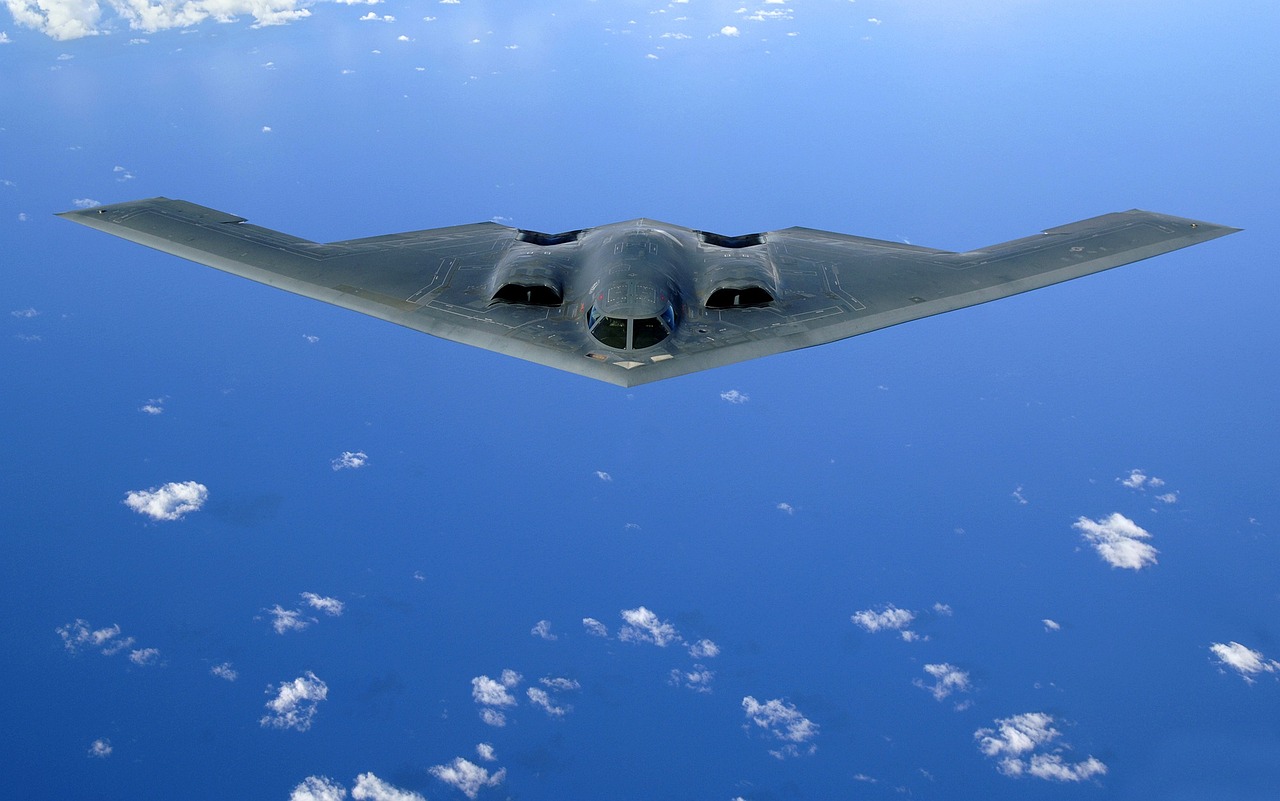
The Future of Robotics in Military Warfare
The future of robotics in military warfare is not just a continuation of current trends; it represents a paradigm shift in how conflicts are fought and managed. As we stand on the brink of a new era, the integration of advanced technologies like artificial intelligence, machine learning, and enhanced robotics is set to redefine military strategies and operations. Imagine a battlefield where decisions are made in real-time, powered by data analytics and autonomous systems, allowing for a level of precision and responsiveness that humans alone cannot achieve.
One of the most exciting prospects is the development of swarm robotics. Inspired by nature, particularly the behavior of insects like bees and ants, swarm robotics involves deploying multiple robots that can work together to accomplish complex tasks. This technology could revolutionize reconnaissance missions, where a swarm of drones could cover vast areas more efficiently than a single unit. Moreover, the ability to communicate and coordinate among themselves means that these robots could adapt to changing environments and threats, providing a significant tactical advantage.
Additionally, as artificial intelligence continues to evolve, we can expect robots to take on more sophisticated roles in military operations. For instance, AI could enable drones to not only conduct surveillance but also to analyze data on the fly, determining the best course of action without human intervention. This shift raises important questions about the future of military decision-making and the role of human commanders in a landscape increasingly dominated by machines.
However, with these advancements come significant challenges. The potential for autonomous weapons systems to operate without direct human oversight raises ethical concerns about accountability and the rules of engagement. Who is responsible when a robot makes a mistake? This question will be central to future discussions about military robotics and their integration into armed forces worldwide. Furthermore, as nations race to develop these technologies, we may witness a new arms race, where the emphasis shifts from traditional weaponry to advanced robotic systems.
As we look to the future, it's essential to consider the implications of robotics on international relations. The introduction of sophisticated military robots could alter power dynamics, with countries that embrace these technologies gaining a strategic edge. This could lead to increased tensions and a reevaluation of existing treaties and agreements related to warfare. The challenge will be to balance innovation with ethical considerations, ensuring that advancements in military robotics do not lead to greater instability.
In conclusion, the future of robotics in military warfare is filled with potential and peril. As technology continues to advance at a rapid pace, the military landscape will inevitably change, demanding new strategies, ethical frameworks, and international cooperation to ensure that these powerful tools are used responsibly. The next decade will likely see significant developments in this field, and it will be fascinating to observe how these changes shape the nature of conflict and security on a global scale.
- What are the main benefits of using robotics in military operations?
Robotics can enhance operational efficiency, reduce risks to human life, and improve data collection and decision-making capabilities. - What ethical concerns are associated with military robotics?
Key concerns include accountability for autonomous decisions, the potential for dehumanization in warfare, and the implications for international conflict dynamics. - How might swarm robotics change military strategies?
Swarm robotics can provide enhanced reconnaissance capabilities, allowing for more efficient coverage of areas and adaptive responses to threats. - What role will AI play in the future of military robotics?
AI will enable robots to analyze data in real-time, make autonomous decisions, and improve operational effectiveness in various military contexts.
Frequently Asked Questions
- What are military robots, and how are they used in warfare?
Military robots are automated machines designed for various tasks in combat scenarios. They are used for surveillance, reconnaissance, logistics, and even direct combat. These robots can operate in environments that are too dangerous for human soldiers, effectively enhancing operational efficiency and reducing the risk to human life.
- What are the different types of military robots?
There are several types of military robots, including:
- Unmanned Aerial Vehicles (UAVs): Used for surveillance, reconnaissance, and combat missions.
- Ground Robots: Employed for bomb disposal, logistics support, and reconnaissance.
- Underwater Drones: Utilized for tasks like mine detection and reconnaissance in aquatic environments.
- What are the benefits of using robotics in military operations?
Robotics in military operations offer numerous benefits, such as:
- Enhanced Efficiency: Robots streamline operations, allowing for quicker deployment and execution of missions.
- Reduced Casualties: By taking on high-risk tasks, robots help protect soldiers and minimize human loss in combat.
- Improved Data Collection: Robotics enhance intelligence gathering and situational awareness for military commanders.
- What are the ethical implications of using robots in warfare?
The use of robotics in warfare raises significant ethical questions. Issues like accountability for decisions made by autonomous systems, the potential dehumanization of combat, and the impact on international relations are critical considerations that need to be addressed.
- How do military robots affect the future of warfare?
As technology continues to evolve, military robots are expected to play an even larger role in warfare. Advancements in AI and robotics could lead to new applications in combat and support roles, fundamentally changing how wars are fought and the strategies employed by military forces.

